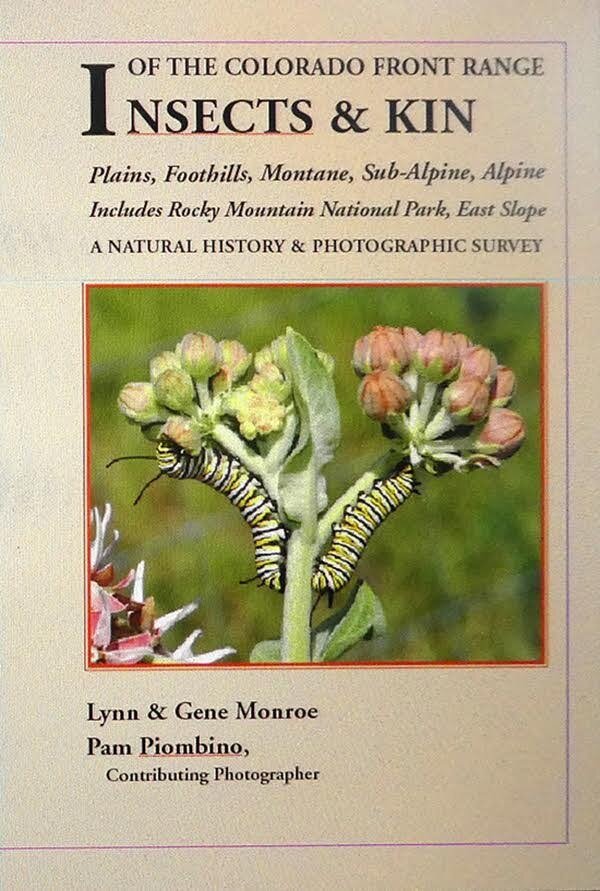Insects and Kin of the Colorado Front Range
A Book Review by Pam Piombino
On a visit to Anza Borrego State Park in 2016, I was in their Nature Association’s gift shop and saw an amazing book, Desert Insect and Kin of Southern California. I immediately purchased a copy and after returning to Colorado, mentioned it to Jan Chu, my (and many others) Lepidopteran mentor. She informed me that the authors, Lynn and Gene Monroe, lived in Lyons and that she would arrange an introduction. That was the beginning of my sharing many insect photos I had taken in Boulder County. I am delighted and honored to be a very small part of their brilliant work.
On Lynn and Gene’s 18 acres of land to the west of Lyons and bordering National Forest, they were elated to note an abundance of insects and spiders. Their inquisitiveness and passion for learning turned to an in-depth documentation of these oft-overlooked creatures. The production of this book, Insects and Kin of the Colordao Front Range represents over 30 years of photographing, systematic researching, and communication with dozens of professionals and knowledgeable citizen scientists for correct identifications.
Insects and Kin, in 1104 pages, is a comprehensive guide to the major orders of insects that you are likely to observe throughout Colorado’s seven Front Range life zones. The writing is clear and concise while each of the 1224 species of insects detailed have one to three color photographs. Besides having an overview at the beginning of each Family, the Genus or species write-ups include a physical description, their geographical range, when in the year they are active, and their plant and habitat associations.
This treatise is a perfect balance between the usual shallow descriptions of a few representative species and the too technical for those of us who do not have the vocabulary to understand books written for specialists.
This book has a limited run of only 250 copies. Books can be ordered direct from the authors. Find out more.

